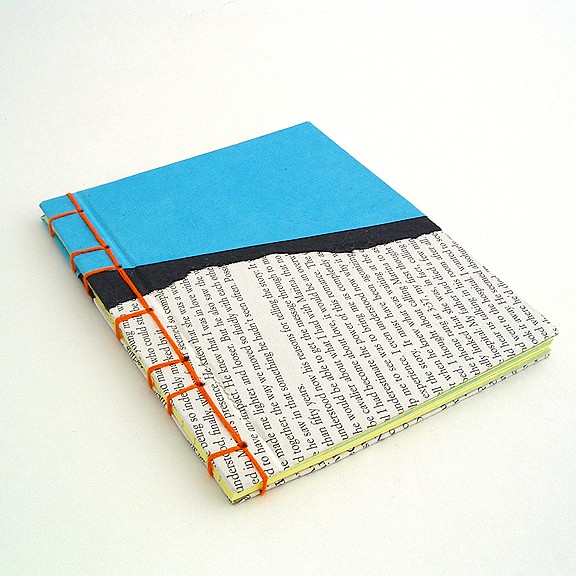 Traditional Japanese bindings are side-sewn, and large books are divided down into slim volumes which are printed on thin kozo paper, and the volumes are collected in a custom-sized case.
Traditional Japanese bindings are side-sewn, and large books are divided down into slim volumes which are printed on thin kozo paper, and the volumes are collected in a custom-sized case.
My book is “westernized” because in Japan the thin kozo pages are folded in half, and the folded edges are on the fore-edge, where you would thumb through the book. I’ve used single sheets of paper, and because it’s thicker there isn’t a problem with ink bleeding through the pages when you write on them.
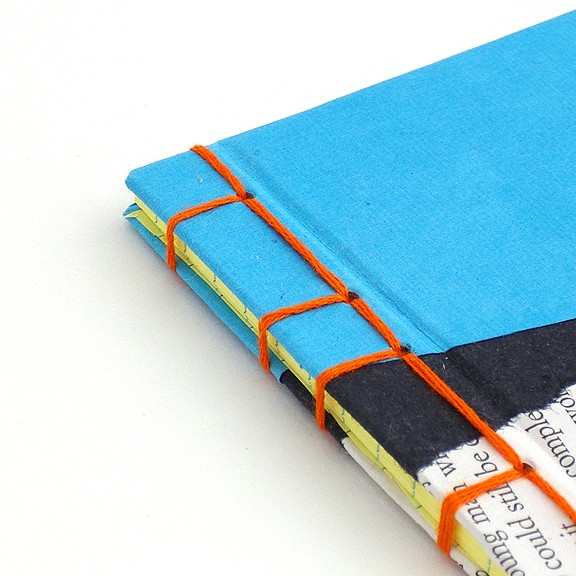
Traditionally an awl and a mallet would be used to punch the sewing holes, but I used a hand-cranked drill.
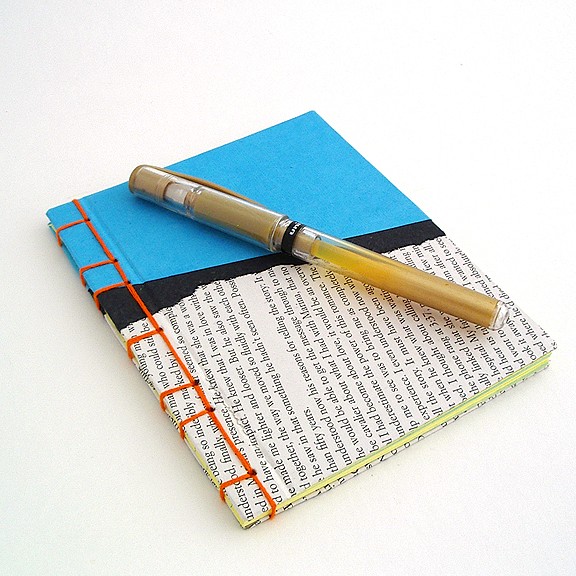
When I finished with the covers for this book I thought they reminded me of a painting by abstract expressionist Mark Rothko, which is why I describe this journal as “Rothkoesque”.
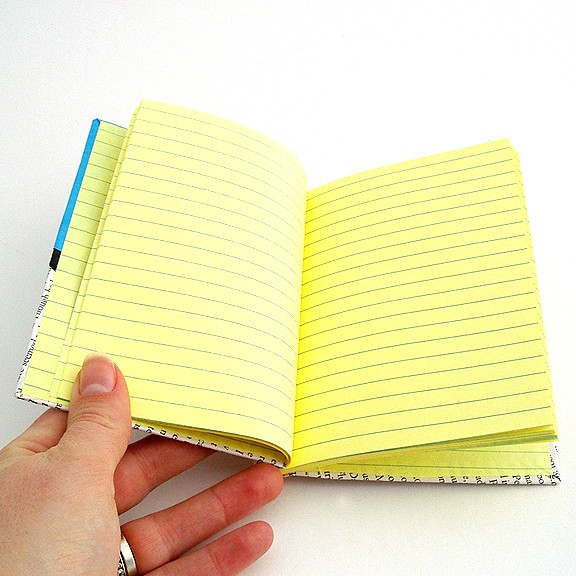
I used lined super thin notebook paper inside, and the outside is hardcover, but traditionally these books would be soft cover.
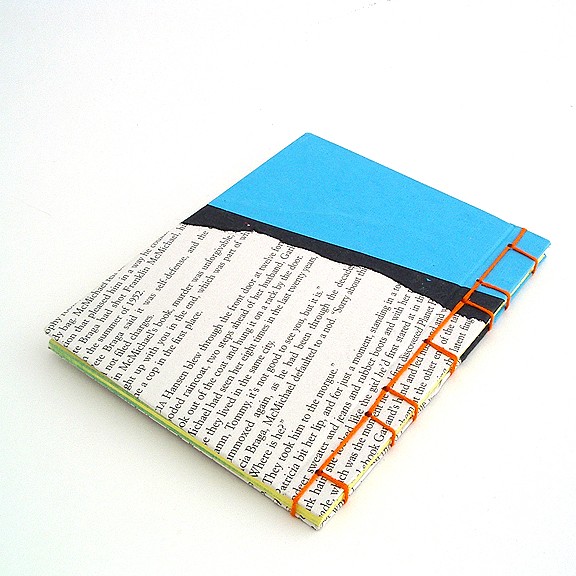
The back cover of the book – the knot for the sewing is hidden inside, so that the clean lines of stitching are maintained.
Jenni Bick, whose bindery is located in Martha’s Vineyard, MA has a great tutorial and examples on her blog about Japanese binding. Another good resource is a book by Kojiro Ikegami, called Japanese Bookbinding: Instructions from a Master Craftsman which includes step by step photos and diagrams.
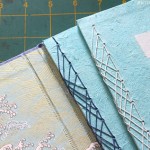
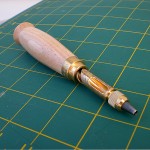

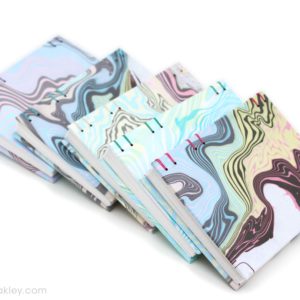
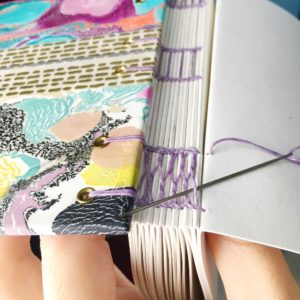
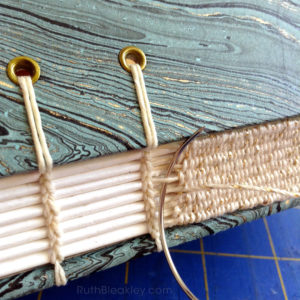




Leave a Reply